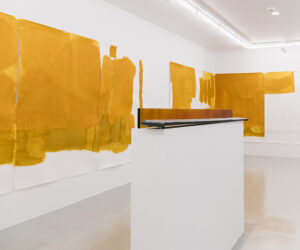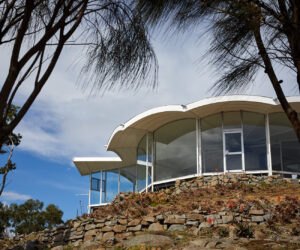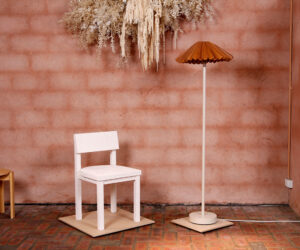Mel Robson: Intersections and Boundaries
Alice Springs-based ceramic artist Mel Robson focuses her practice around ideas of place, identity and the ways in which histories, stories and associations can become embedded in everyday objects. In this solo exhibition, Robson presents a collection of ceramic vessels that explores place through the lens of mapping and cartography. These artworks are the culmination of Robson’s research and experiments as the 2018 – 2019 Araluen Cultural Precinct’s Creative in Residence.
Mel Robson: Intersections and Boundaries is showing at JamFactory, Adelaide in Gallery Two from 28 February – 3 May 2020.
With an artistic career spanning over twenty years, Mel Robson’s diverse practice has included the creation of functional objects, sculptural artworks, large-scale installation and public art pieces. Since relocating to Alice Springs with her family in 2010, Robson has expanded her ceramic practice to include collaborative projects with the local community and a deeper focus on the ways in which people experience and represent place.
In Intersections and Boundaries, Robson has crafted a body of ceramic artworks that respond to the Araluen Art Collection, Alice Springs. As the 2018 – 2019 Araluen Cultural Precinct’s Creative in Residence, Robson was granted intimate access to the collection and the opportunity to develop a body of work in response to both her research findings and engagement with the local community through artist-led workshops. The Araluen Art Collection aims to establish a permanent record of the diverse arts practices in Central Australia and contains over 1000 artworks by artists who have a strong connection to the region. During her time with the collection, Robson was particularly drawn to a number of artworks that evoked a strong sense of place through the use of line and cartographic references, including both two and three-dimensional pieces by Alec Baker, Pepai Jangala Carroll, Queenie McKenzie, Thancoupie and John Wolseley. This exhibition sees Robson focus on the idea and power of the line in asserting our understanding of ‘place’– lines being a universal mapping device through which space is defined, boundaries delineated, the course of journeys documented and ownership claimed.
In Intersections and Boundaries, Robson presents her artworks as an undulating landscape of vessels of different shapes, sizes and textures that peak and trough. The diverse material scope of porcelain, stoneware and earthenware clay reflect the colours and textures of the landscape surrounding Robson’s beloved hometown of Alice Springs. “The red earth. . . the bleached riverbeds, the sun-bleached sticks, twigs and stones that line them like little bones, the smooth milky surfaces of the ubiquitous ghost gums, and the deep black of the often burnt out landscape,” Robson says.
The vessels are marked with an array of networks of fine and heavy lines, tightly packed rectangles, broad strokes and block colours that are reminiscent of the familiar imagery of maps and the aerial views of pastoral lands. The strict boundaries and precise demarcations that appear on the vessels speak to the way in which understandings of place are human constructs with the power to both unite and divide. “It is the line that can bring us together and connect us, as much as it can divide and separate us,” Robson says. The fine line work of pastoral boundaries and the detailed mapping imagery are mostly created using ceramic decals, with Robson sourcing maps, texts and drawings from explorers’ journals to build up a varied visual library of carved, delineated and marked up landscapes. In addition, Robson has also used underglaze washes and pencils to create softer painterly finishes and imprecise hand-drawn marks on the clay surfaces.
Offering both literal and metaphorical representations of place, the artwork featured in Intersections and Boundaries ultimately explores the ways in which mapping can encourage us to examine the construction of place, how we position ourselves in the landscape and offer us a means to navigate the complex histories of the places in which we live.



